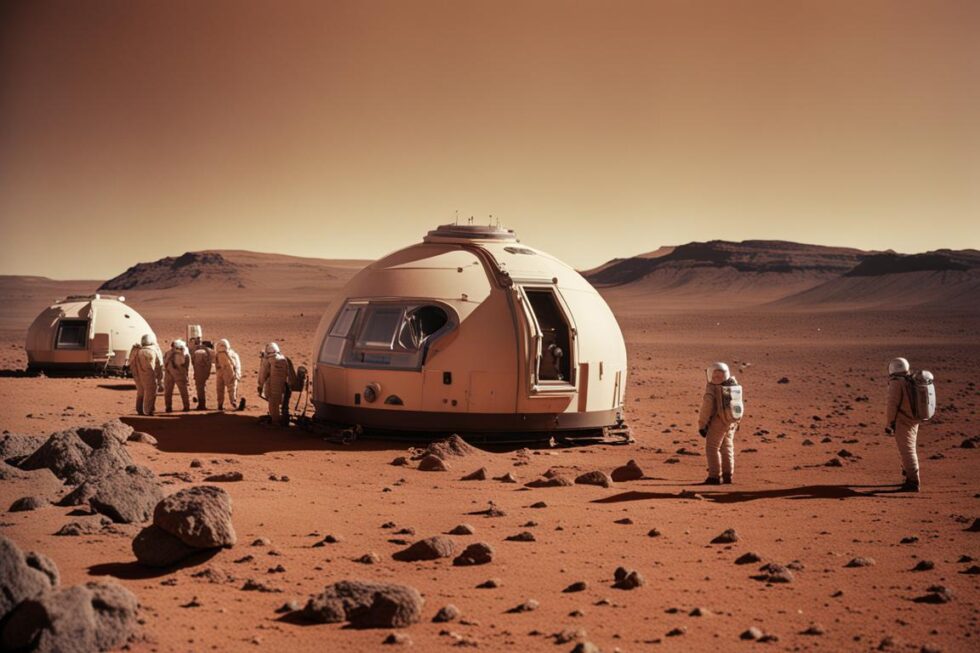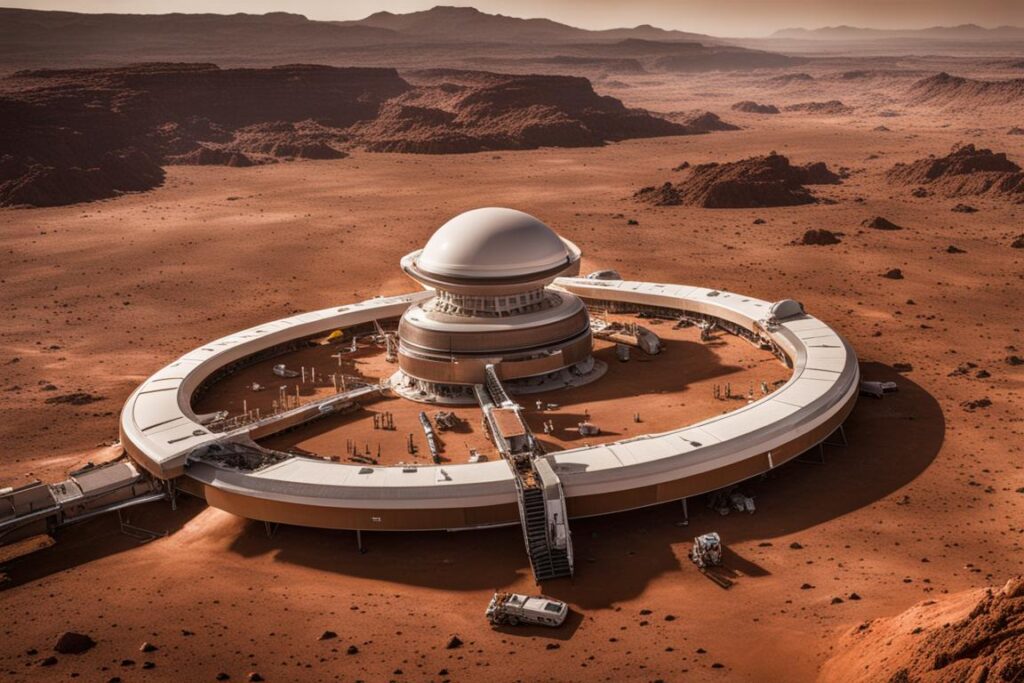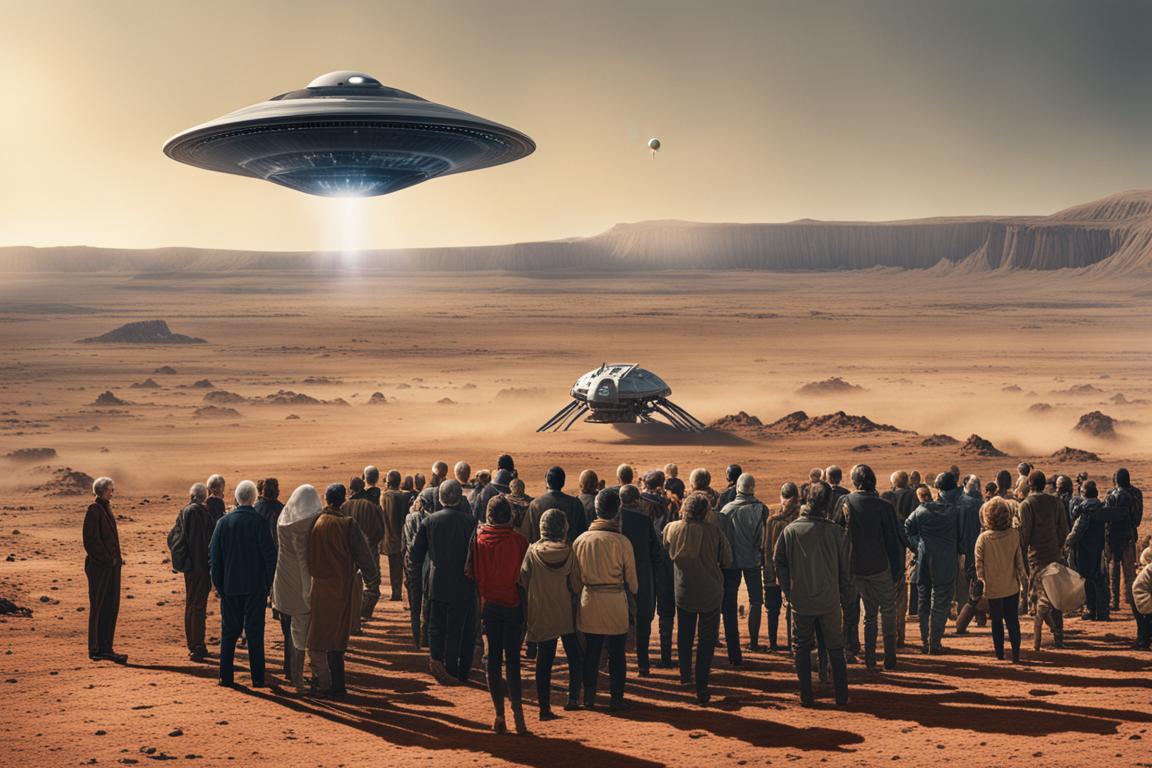
By the year 2030, humanity had achieved one of its most ambitious goals: the colonization of Mars. This monumental achievement was the result of decades of scientific research, technological advancements, and international collaboration. The successful establishment of a permanent human presence on the Red Planet brought profound changes to science, society, and the future of human civilization.
The journey to Mars began with the coordinated efforts of space agencies like NASA, ESA, Roscosmos, CNSA, and private companies such as SpaceX and Blue Origin. The first wave of colonists consisted of astronauts, scientists, engineers, and medical professionals, carefully selected for their expertise and resilience. Their mission was to lay the foundation for a sustainable human settlement, beginning with the construction of habitats and life-support systems.

The initial Martian habitats were modular and expandable, designed to provide safe and comfortable living conditions in the harsh Martian environment. These habitats featured advanced life-support systems that recycled air, water, and waste, ensuring that resources were used efficiently. Solar panels and nuclear power generators provided reliable energy, while greenhouses enabled the cultivation of crops, reducing the need for supplies from Earth.
The colonization of Mars required significant advancements in various fields. Robotics and AI played crucial roles in construction, maintenance, and exploration. Autonomous robots prepared the landing sites, built infrastructure, and conducted scientific research in areas too dangerous for humans. AI systems managed the life-support and energy systems, ensuring optimal performance and safety.
The success of the initial missions sparked a new era of space exploration and inspired further waves of colonization. Governments and private enterprises invested heavily in Martian infrastructure, leading to the rapid expansion of human presence on the planet. New settlements sprouted across the Martian surface, each with its own unique design and purpose. Some focused on scientific research, while others aimed at developing industrial capabilities, such as mining Martian resources.
The colonization of Mars also led to significant cultural and social changes. The first Martian settlers formed a close-knit community, united by their shared experiences and challenges. Over time, this community developed its own identity, blending elements of various Earth cultures with new Martian traditions. The sense of being pioneers in a new world fostered a strong spirit of cooperation, innovation, and resilience.
Education on Mars became a priority, with schools and universities established to ensure that future generations of Martians were well-equipped to handle the unique challenges of their environment. These institutions emphasized STEM (science, technology, engineering, and mathematics) education, alongside courses on Martian history, ecology, and ethics. Students were encouraged to think creatively and collaboratively, preparing them to contribute to the ongoing development of their new home.
The economic implications of Mars colonization were profound. The Martian economy initially relied on support from Earth, but over time, it began to develop its own industries. Mining operations extracted valuable resources, such as rare metals and water ice, which were either used on Mars or sent back to Earth. Scientific research and technological innovation thrived, with Mars becoming a hub for cutting-edge developments in various fields.
The political landscape of Earth also changed in response to Mars colonization. International cooperation in space exploration fostered a sense of global unity, with nations working together to support the Martian colonies. The establishment of a Martian governance system, initially overseen by Earth-based organizations, gradually evolved into a more autonomous structure. Martian settlers began to elect their own representatives, who advocated for the interests of the colonies and negotiated with Earth governments.
The environmental impact of colonization was a constant concern. Efforts were made to minimize the ecological footprint of human activities on Mars, preserving its unique geological and potential biological features. Terraforming, the process of modifying the Martian environment to make it more Earth-like, was a topic of intense debate. Some advocated for gradual terraforming to create a more hospitable environment, while others emphasized the importance of studying and preserving Mars in its natural state.
The presence of humans on Mars also spurred a new wave of space exploration. With Mars serving as a stepping stone, missions to the outer planets and their moons became more feasible. The dream of interstellar travel gained momentum, with research into advanced propulsion systems and long-duration space habitats taking on new urgency.

As the decades passed, the human population on Mars grew, and the planet became a thriving hub of human activity. The relationship between Earth and Mars evolved into one of mutual dependence and support, with regular exchanges of goods, knowledge, and culture. The success of the Martian colonies demonstrated humanity’s ability to adapt and thrive in new environments, sparking hope and ambition for the future.
The colonization of Mars by 2030 marked the beginning of a new chapter in human history. It showcased the power of innovation, collaboration, and the enduring human spirit. As humanity looked to the stars, the lessons learned on Mars would guide future explorations, ensuring that the spirit of discovery and adventure continued to drive humanity forward, toward even greater achievements and new horizons.




